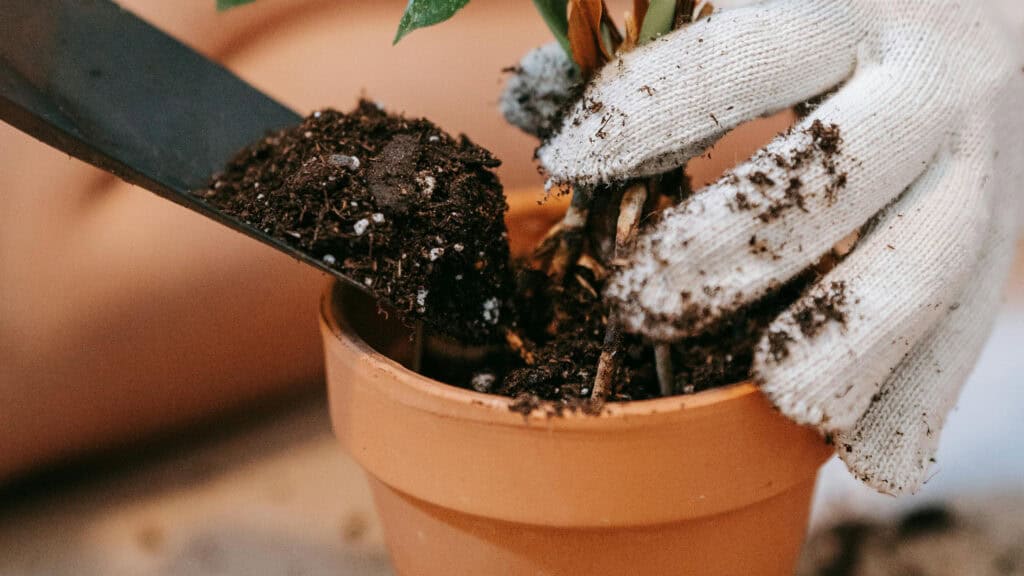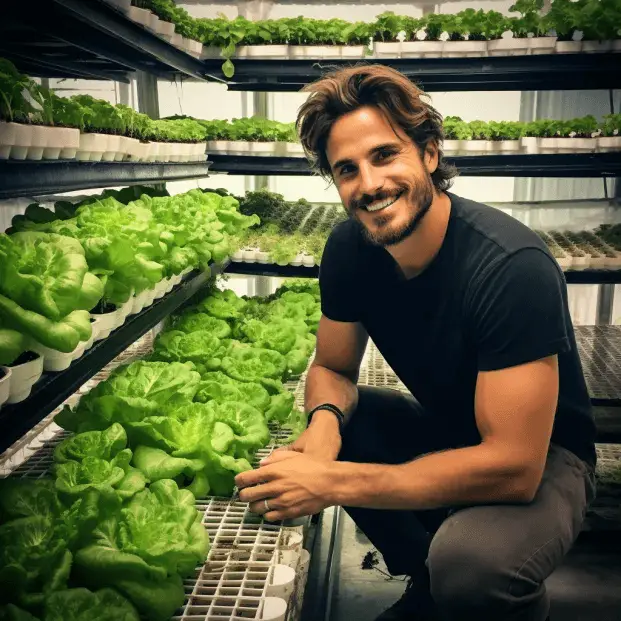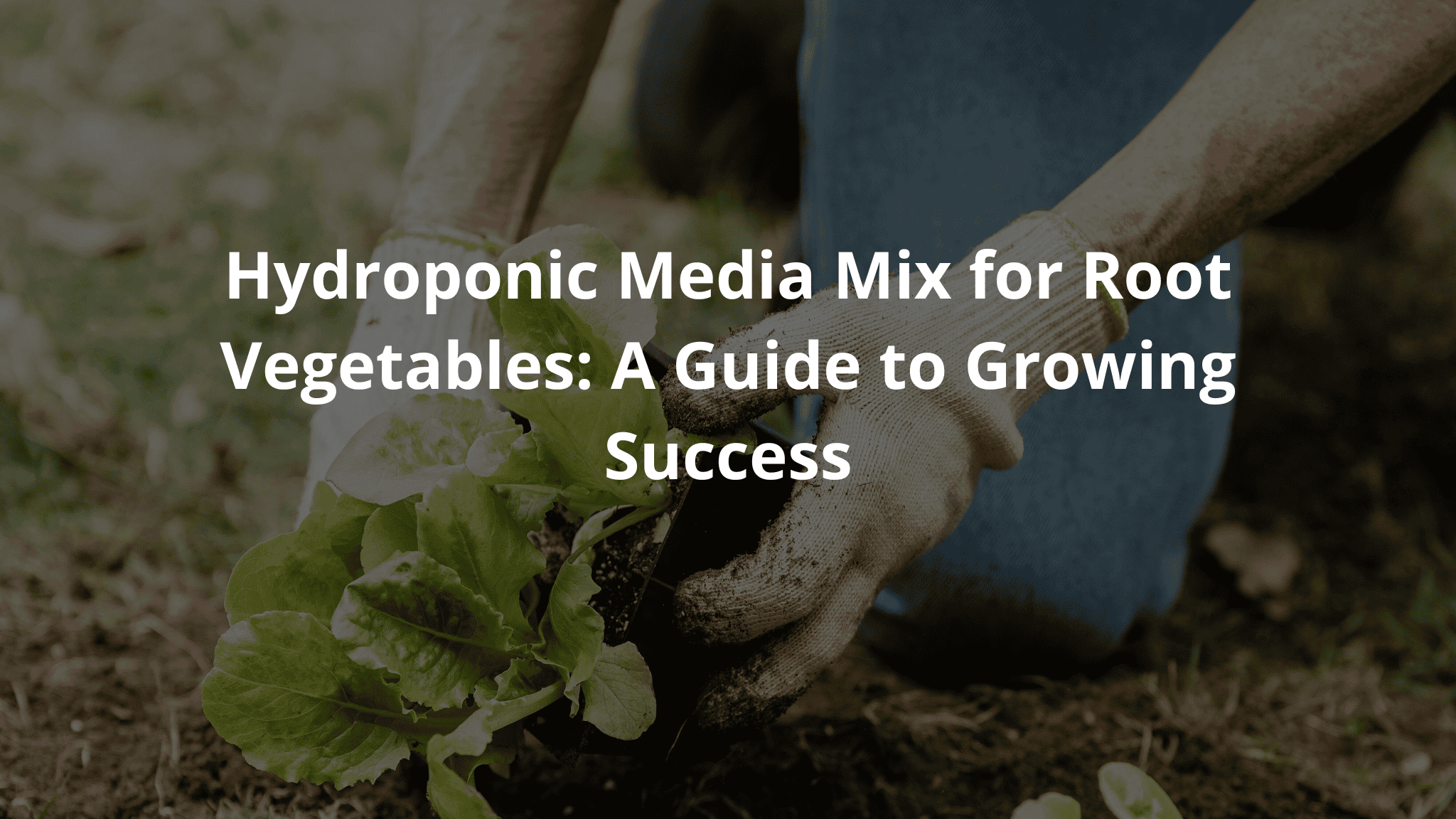
Growing root vegetables in hydroponic systems can be really exciting. It is like watching a magic show where plants grow without soil.
This method uses nutrient solutions and special media to help plant roots thrive. If someone wants to grow their own hydroponic carrots or beets, keep reading! Here are some tips and tricks to make a hydroponic garden flourish.(1)
Key Takeaway
- Hydroponic systems can lead to faster growth and higher yields.
- Choosing the right media mix is essential for plant roots to thrive.
- Regular monitoring of water and nutrients is key to success.
Popular Hydroponic Media
Credits: Keep on Growin with Mike VanDuzee
First, let’s look at some popular hydroponic media. Each type has its own good and bad points, which can affect how plants grow.
Coco Coir
Coco coir comes from coconut husks. It is renewable and good for the environment. This medium has a nice balance of air and water. It helps stop roots from drowning, which is important for plant health. Plus, it has hormones that help seedlings grow strong. Just remember, it holds moisture well, so check it often.
Perlite
Next is perlite. This light material comes from volcanic glass. Perlite is great for letting air in, which helps roots get the oxygen they need. It is often mixed with other media like coco coir for better support. Be careful! If water touches it directly, it can move around.
Expanded Clay Pellets
Expanded clay pellets are round balls made from clay. They do not change pH and give a good mix of air and water for roots. They work well for long-term growth, but they can be expensive and cannot be reused. Still, many gardeners like them because they work well.
Gravel
Gravel is another option. It is cheap and easy to clean. It drains well too, which helps stop over-saturation. However, gravel is heavy and can dry out roots if not watched closely.
Wood Fiber
Wood fiber comes from wood chips. This organic medium is effective and keeps its shape over time. Some studies say it even helps plants grow better. But it can attract pests and is not always clean, so keep that in mind.
Choosing the Right Mix for Root Vegetables
When choosing a hydroponic media mix for root vegetables, think about these points:
- Water Retention Needs: Root vegetables need steady moisture. A mix of coco coir and perlite can help keep the right balance.
- Nutrient Management: Make sure the media doesn’t release too many nutrients that could harm your plants.
- Weight and Stability: Heavier media like gravel might need extra support in your hydroponic system.
Hydroponic Gardening Systems
Now, let’s talk about the systems used for hydroponic gardening. Different types work well for root vegetables.
Deep Water Culture (DWC)
DWC is a system where plant roots sit in nutrient-filled water. This method is simple and great for growing carrots and other root veggies. Just make sure to have a good water pump to keep the water flowing!
Nutrient Film Technique (NFT)
NFT uses a thin film of nutrient solution that flows over the roots. This keeps the roots moist and well-fed. It is a bit more advanced, but many gardeners find it helps plants grow strong.
Drip Systems
Drip systems are popular for growing leafy greens too. This system delivers nutrient solutions directly to the roots using drip lines. It is efficient and can help save water.
Nutrient Solutions
Nutrient solutions are very important for hydroponic plants. They provide the essential nutrients needed for healthy growth. A good nutrient solution is often high in potassium and phosphorus. These nutrients are key for root development.
Monitoring Nutrient Levels
It is important to check the nutrient levels regularly. Using a tool to measure Electrical Conductivity (EC) helps ensure plants get what they need. It’s like having a secret recipe for success!
By checking the EC, gardeners can adjust the nutrient levels. This way, plants stay healthy and grow strong. Keeping the right balance makes a big difference in plant health. Happy plants mean a happy gardener!(2)
Water Management
Water management is crucial for a hydroponic garden. It is important to use fresh, safe drinking water. Knowing the capacity of the water reservoir helps prevent root rot, which can be harmful to plants. A good balance of air and water in the system is also vital. This balance ensures that roots receive enough oxygen to grow strong and healthy.
Algae Growth
Algae growth can pose a challenge in hydroponic systems. If algae starts to appear, controlling light levels becomes essential. Algae thrives in light, similar to plants, but excessive light can damage the roots. By managing light exposure, gardeners can protect their plants and maintain a healthy growing environment.
Environmental Impact
Hydroponic gardening can positively impact the environment by using less water compared to traditional gardening methods. This efficient use of water helps conserve this precious resource. Additionally, hydroponics eliminates the need for pesticides or herbicides, leading to healthier plants and fresher produce for everyone.
Research indicates that root vegetables grown hydroponically often have higher antioxidant levels. Projects like the HydroRoot Project in California showcase this benefit. These studies demonstrate the effectiveness of hydroponics in producing nutritious food while being environmentally friendly.
Practical Advice for Success
For anyone considering starting a hydroponic garden, here are some detailed tips:
- Select the Right Media Mix: Choose a media mix that meets the specific needs of root vegetables. Different plants may require varying levels of moisture and aeration. A combination of materials like coco coir, perlite, or rock wool can create an ideal environment for root growth.
- Monitor Water Levels and Nutrient Solutions: Regularly check both water levels and nutrient solutions. This practice ensures that plants receive the right balance of hydration and nutrients. Using tools like pH meters and EC meters can help maintain optimal conditions for plant health.
- Experiment with Different Systems: Explore various hydroponic systems, such as deep water culture, nutrient film technique, or aeroponics. Each system has unique benefits, and trying different setups can help identify what works best for your specific gardening goals.
By following these tips, new gardeners can successfully cultivate a thriving hydroponic garden. With diligent care and attention, plants will grow strong and healthy!
Conclusion
The right hydroponic media mix for root vegetables can greatly affect gardening success. Choosing a combination like coco coir and perlite can provide a good balance of moisture and air. Keep monitoring plants and their needs, and it will lead to growing healthy hydroponic carrots, beets, and more! Happy gardening!
FAQ
What are the best hydroponic systems for growing root vegetables like hydroponic carrots?
When you want to grow root vegetables like hydroponic carrots, choosing the right hydroponic systems is key. Drip systems and wick systems work well because they provide just the right amount of water and nutrients. These systems help plant roots stay healthy by giving them moisture without drowning them, which can cause root rot.
How do nutrient solutions affect plant growth in hydroponic gardens?
Nutrient solutions are super important for plant growth in hydroponic gardens. They give plants the nutrients they need to grow strong and healthy. When nutrient levels are balanced, plants like leafy greens and root vegetables can grow faster and better. These solutions also help plant roots hold onto water, which is essential for their development.
What materials are best for a hydroponic media mix for root vegetables?
For a great hydroponic media mix for root vegetables, use a blend of clay pebbles, perlite, and vermiculite. These materials are light and allow air and water to flow easily. They also help keep the right amount of moisture without overwatering, which can lead to root rot. This mix gives plant roots plenty of room to grow and stay healthy.
How can I prevent algae growth in my hydroponic system?
To keep algae from growing in your hydroponic system, manage your light carefully. Use artificial light only when needed. Also, keep your water reservoir clean and check that water flows properly. Regularly remove any plant debris and make sure your nutrient solutions are fresh. These steps will help keep algae at bay.
What is the importance of Cation Exchange Capacity in hydroponic gardening?
Cation Exchange Capacity (CEC) is important in hydroponic gardening because it shows how well the growing medium can hold nutrients. A higher CEC means better nutrient retention, which helps plant roots get consistent access to what they need to grow. This is especially helpful for acid-loving plants and those grown in organic mediums where nutrients can change often.
References
- https://verticalfarmingplanet.com/beyond-the-soil-growing-root-vegetables/
- https://puregreensaz.com/blog/growing-medium/
Related Articles
- https://tophydroponicgarden.com/wick-system/
- https://tophydroponicgarden.com/hydroponics-introduction/
- https://tophydroponicgarden.com/can-garlic-grow-in-hydroponics/
Was this helpful?

I’m Barrie L., a passionate hydroponic gardening enthusiast dedicated to cultivating thriving, soil-less gardens. With a focus on all things hydroponic, I share my expertise on innovative growing techniques and sustainable practices through my blog, tophydroponicgarden.com. As a seasoned hydroponics specialist, my goal is to inspire and guide fellow gardeners in harnessing the power of water-based cultivation for bountiful and eco-friendly harvests. I’m also an author of the book “Hydroponics For Absolute Beginners: Your Step By Step Guide For How To Create An Hydroponics System At Home Without Soil, For Growing Vegetable, Fruit And Herbs.” which is sold on Amazon. Join me on a journey of redefining the way we cultivate plants, one nutrient-rich solution at a time. Happy growing!


